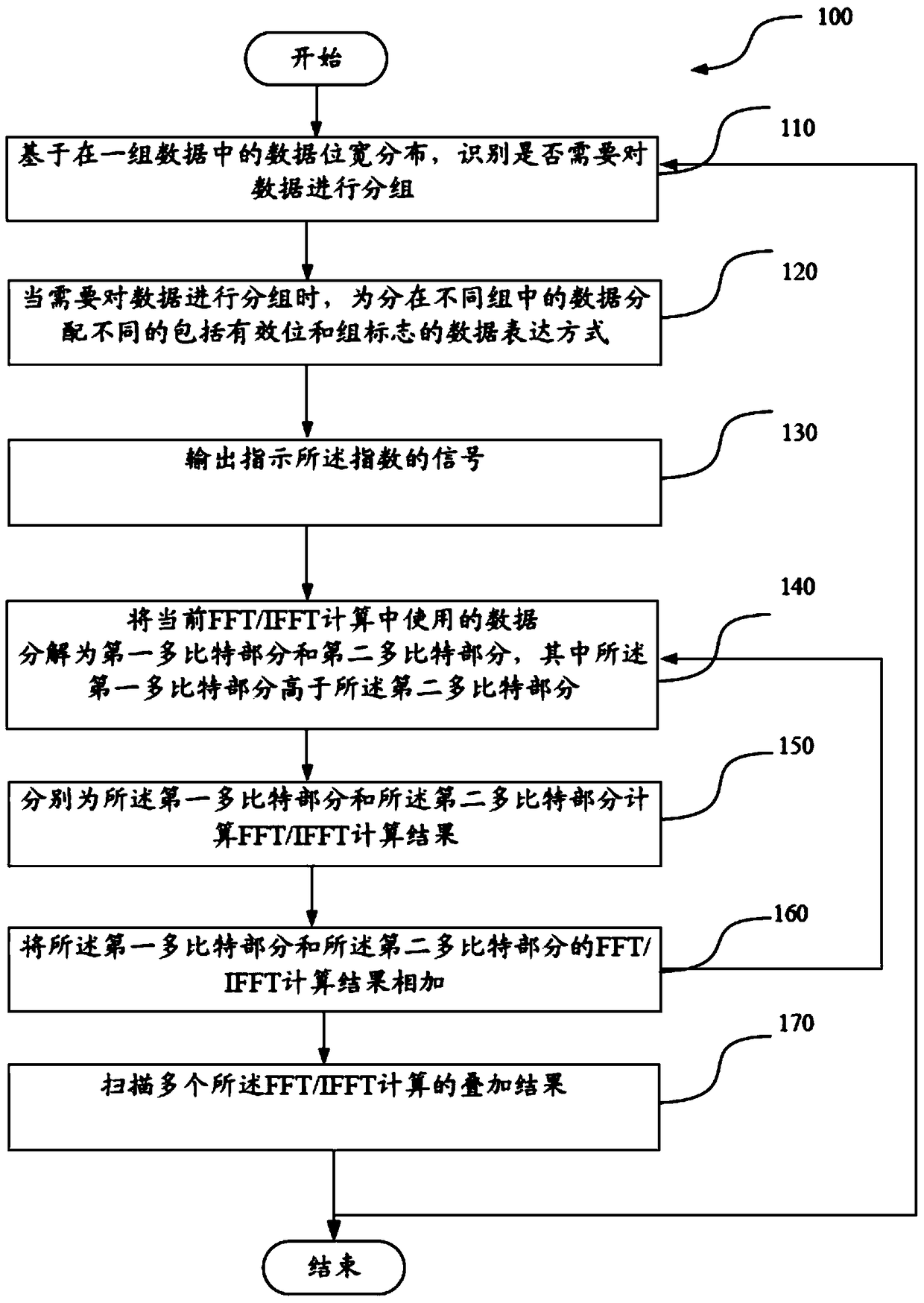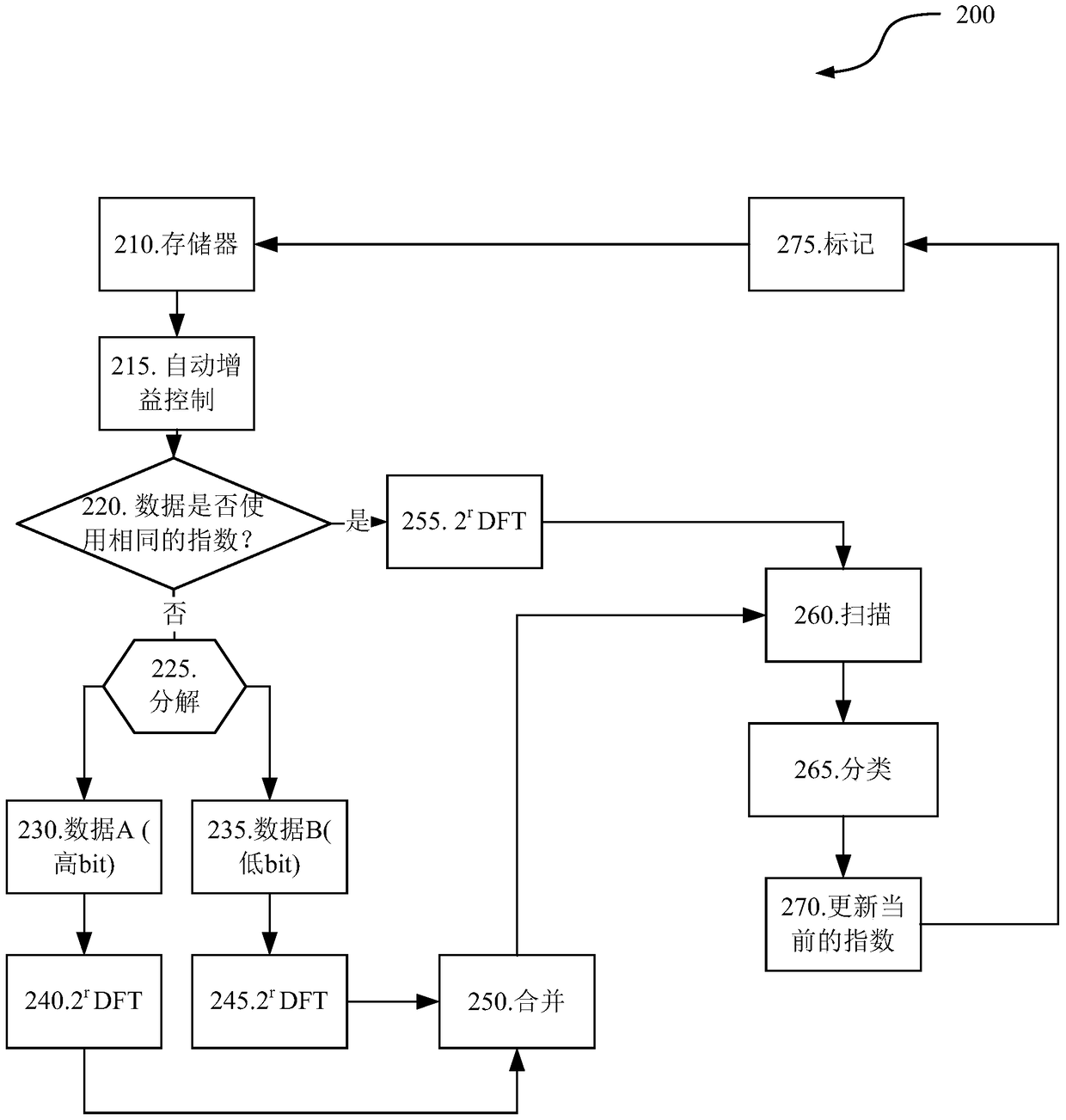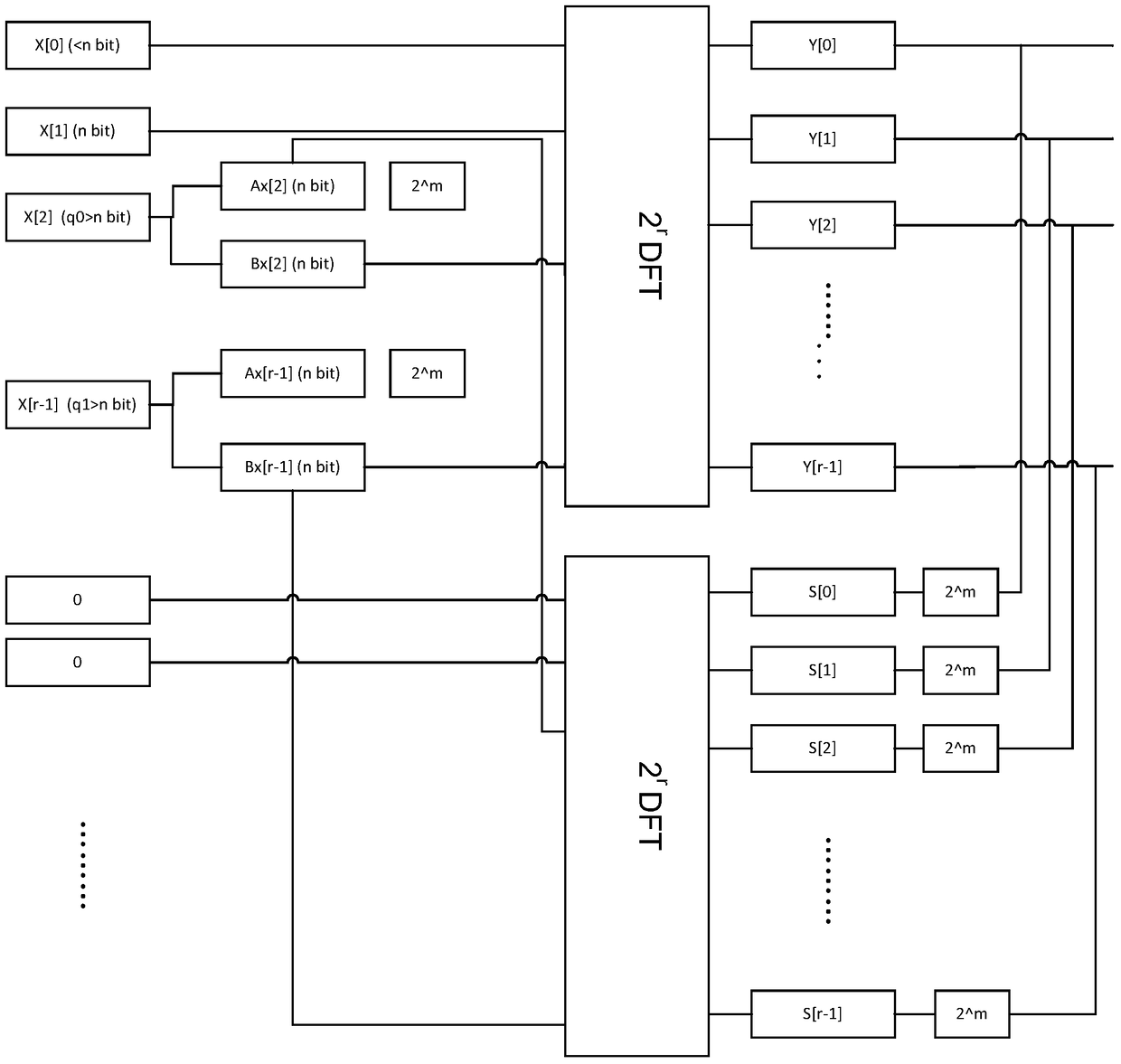Method and circuit for realizing fast Fourier transform/fast Fourier inverse transform
A technology of inverse Fourier transform and Fourier transform, which is applied in the field of data transformation and can solve the problems of complete loss of data and reduction of calculation accuracy.
- Summary
- Abstract
- Description
- Claims
- Application Information
AI Technical Summary
Problems solved by technology
Method used
Image
Examples
Embodiment 1
[0022] For example, the bit width Ns of the FFT / IFFT calculator is 12 bits. The data size (that is, the bit width) used by the first-level calculation result is 15 bits (Ns+3 bits), and the number of data with a bit width of 15 bits is 2, that is, M3=2, 14 bits (Ns+2 bits) , corresponding to M2=3, 13 bits (Ns+1 bit), corresponding to M1=23, and less than or equal to (≤) Ns bits, including 10 bits, 8 bits, 6 bits, and 3 bits, corresponding to M0=100. Let the threshold be 10. According to the data distribution, the number of data with a bit width greater than 13 bits is 5, and the number of data with a bit width greater than or equal to 13 bits is 28, and the threshold is 10. Therefore, the number of data with a bit width greater than 13 bits is less than the threshold 10, and the number of data with a bit width greater than or equal to 13 bits is greater than the threshold 10. Then according to Table 1, x=1, the corresponding gain is 2 -1 .
Embodiment 2
[0024] Threshold is still 10. In another embodiment, for example, the bit width Ns of the FFT / IFFT calculator is still 12 bits. The data size (that is, the bit width) used in the first-level calculation is 15 bits (Ns+3 bits), and the number of data with a bit width of 15 bits is 18, that is, M3=18, 14 bits (Ns+2 bits) , corresponding to M2=3, 13 bits (Ns+1 bit), corresponding to M1=23, and ≤Ns bits, including 10 bits, 8 bits, 6 bits, and 3 bits, corresponding to M0=84. Because the number of data with any bit width is greater than the threshold 10, that is, the distribution of data is uniform, therefore, there is no need to group the data. Therefore, the gain is consistent with that obtained by the traditional method, which is 2 -3 .
[0025] In summary, it can be noticed that when the data is uniform, there will be quite a lot of data at the maximum bit width, generally more than the set threshold, and the AGC gain 1 of the control group will be the same as the AGC gain 2 ...
PUM
 Login to View More
Login to View More Abstract
Description
Claims
Application Information
 Login to View More
Login to View More - R&D
- Intellectual Property
- Life Sciences
- Materials
- Tech Scout
- Unparalleled Data Quality
- Higher Quality Content
- 60% Fewer Hallucinations
Browse by: Latest US Patents, China's latest patents, Technical Efficacy Thesaurus, Application Domain, Technology Topic, Popular Technical Reports.
© 2025 PatSnap. All rights reserved.Legal|Privacy policy|Modern Slavery Act Transparency Statement|Sitemap|About US| Contact US: help@patsnap.com



